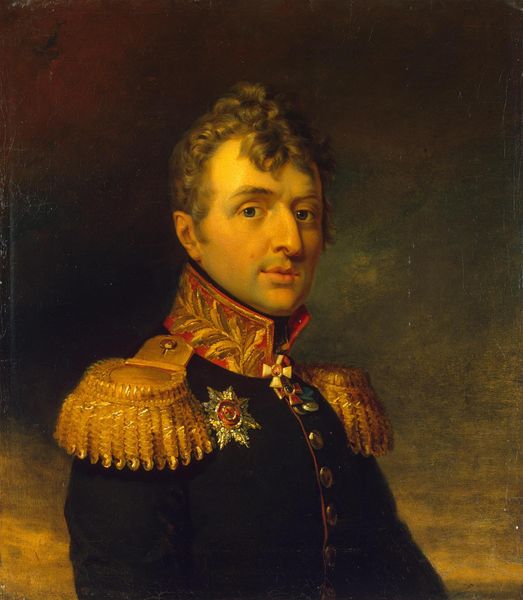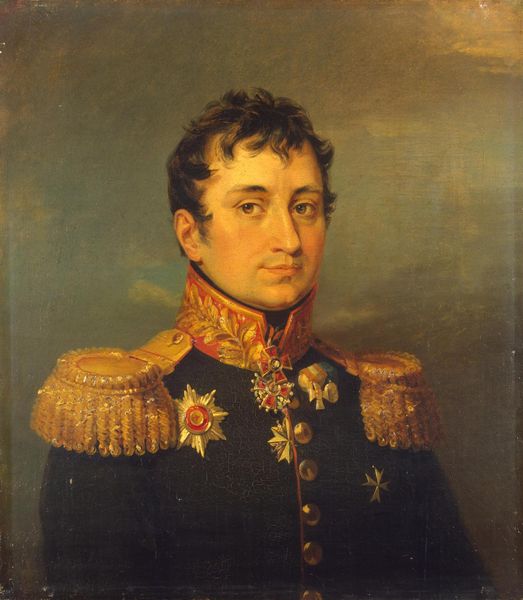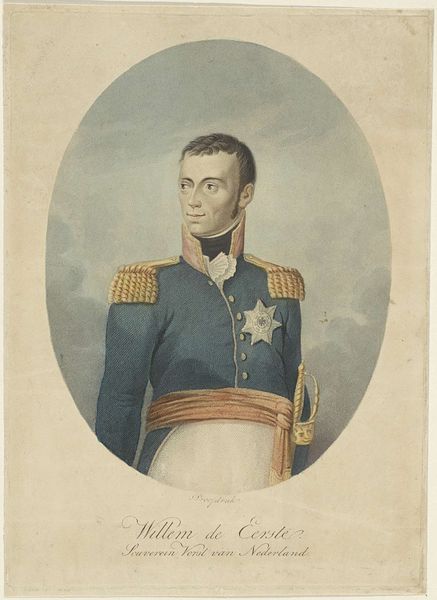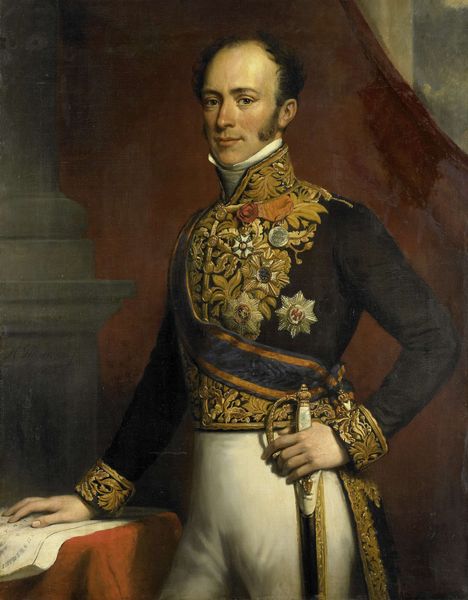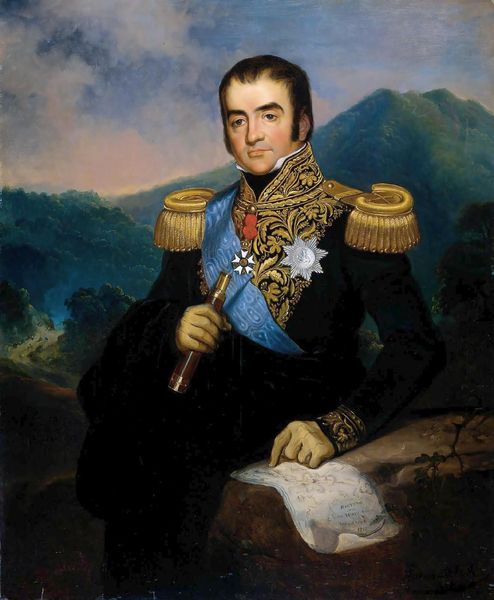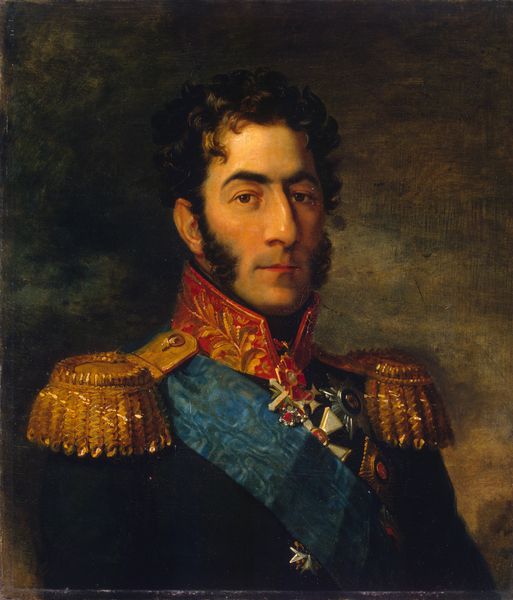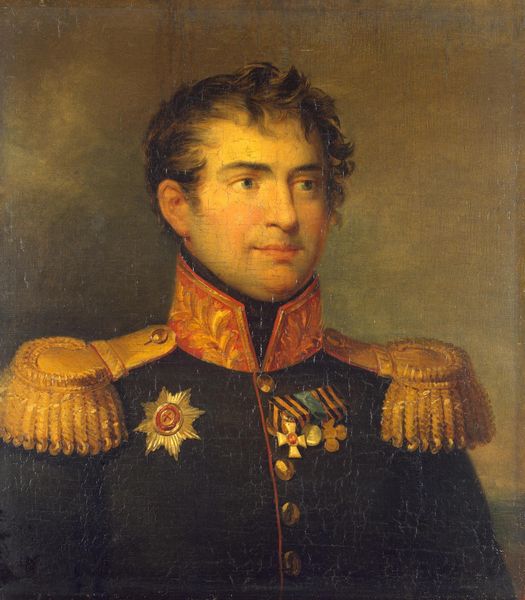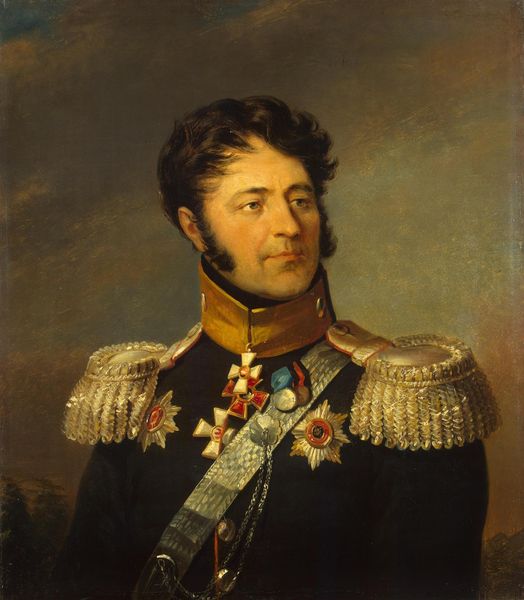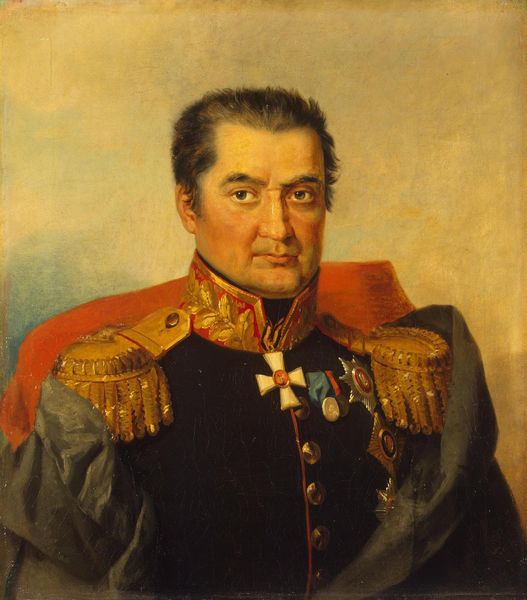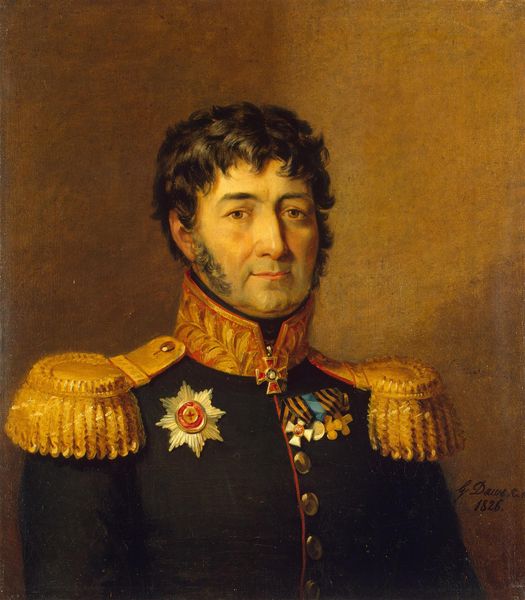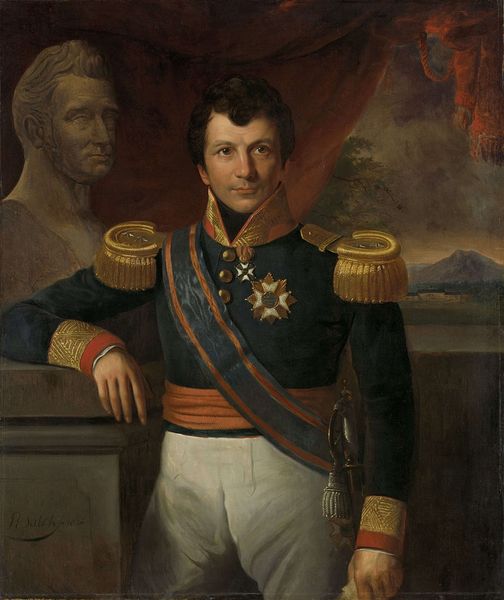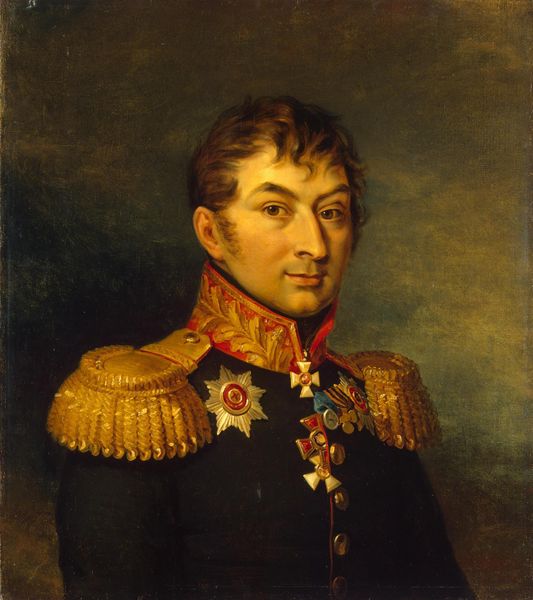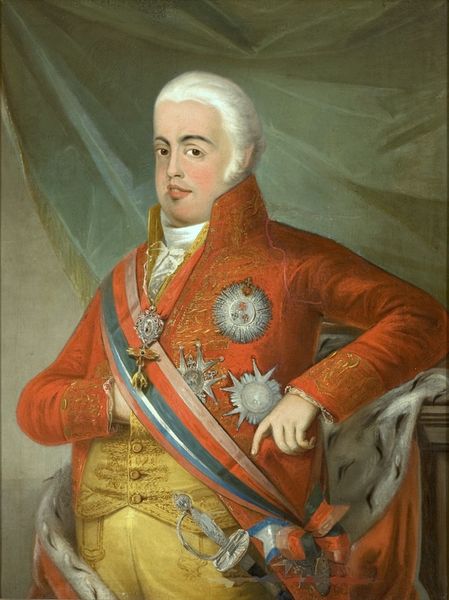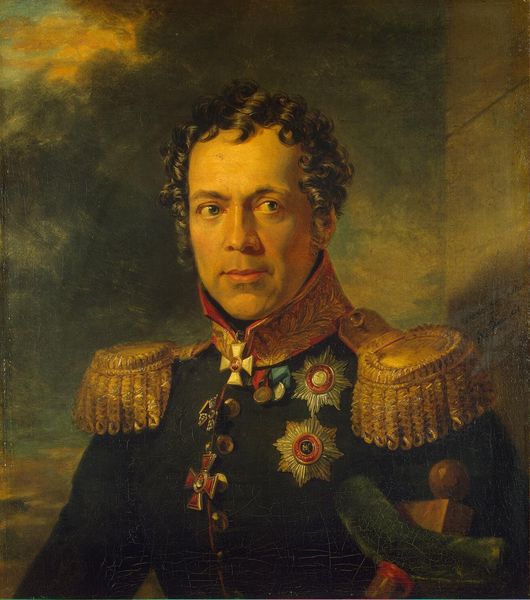
Dimensions: 83 x 70 cm
Copyright: Public domain
Curator: Taking in Simplício Rodrigues de Sá's "Portrait of D. João VI" from 1820, I am immediately struck by the figure’s somber affect. A stillness that seems to hint at a life burdened by weighty matters. What captures your eye initially? Editor: Well, it's undoubtedly formal—those meticulously rendered decorations practically vibrate off his uniform. Look how Rodrigues de Sá deploys compositional structure to highlight dynastic power, but there’s this undeniable tension created by the…almost bewildered expression. Curator: You read dynastic power; I see someone who looks more like he's playing dress-up, right? I get this strange sense of him almost peering out from behind these symbols of royalty, as if to say, "Is this really me?" It’s disarming. Editor: Ah, but consider the context! Academic art dictated that portraiture serve specific functions, and this one delivers a carefully constructed image designed for strategic consumption. Curator: Still, he seems…human. It's there in the details, the lines around his eyes, the set of his mouth—they don't flatter but hint at something beyond official representation, maybe melancholy, certainly…resignation? Editor: Notice the contrast between the rich, textured detail on his coat— the intricate braiding and perfectly weighted epaulettes—and the flatness of the crown placed as a stage prop nearby. It creates a kind of symbolic duality, suggesting both grandeur and something more artificial. Curator: Perhaps Rodrigues de Sá subtly critiques the role of the monarch even as he seemingly reveres him—making this far more nuanced than a straightforward "history painting." I'm curious what João himself thought when he saw it. Editor: The success lies in that ambiguity, inviting endless analyses of the historical power, the artistic expression of courtly patronage and what really drove it. What are your concluding thoughts on its relevance for contemporary audiences? Curator: It makes you consider what's hidden behind any portrait that tries to shape your vision. Makes me question whether "official" portraits actually conceal more than they reveal. Thank you for helping illuminate this, it might now be one of my favorite things in this museum! Editor: Indeed! It certainly prompts profound thought concerning not just representations of power, but representation itself. Thank you!
Comments
No comments
Be the first to comment and join the conversation on the ultimate creative platform.
